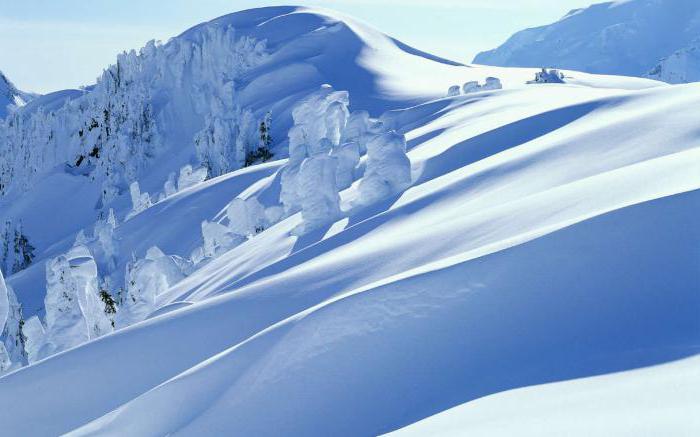
The higher you climb the mountains - the colder it becomes. This truth is studied in school. And if you climb very high in the mountains, you can see the snow that lies there all year round.
In this article we will talk about what a snow line is. And also about what it is conditioned and on what its height depends.
With an upward lift for every 100 meters, the temperatureair is reduced by 0.6 degrees. And the amount of precipitated precipitation, respectively, increases. At high altitudes, they fall out in the form of snow. In nature there is a certain level, above which in the mountains the snow does not melt at all. It is his custom to call the snow line (or border).
This is a very simplified interpretation of this term.What is a snow line from a more scientific point of view? So, the well-known scientist M.V. Lomonosov called it "a frosty layer of the atmosphere." By the way, it was he who first established that the snow line in the mountains and its height depend primarily on the latitude of the terrain.
So, under the snow line is meantthe conventional boundary on the earth's surface, above which the accumulation of precipitation in solid form prevails over their melting. This boundary can be clearly seen on the photograph below:

Scientists distinguish several types of snow boundary:
In addition, in glaciology there is such a thing as "level 365". This is the minimum boundary within which the snow cover lies all year round and does not melt.

Why in some places of the planet does snow lieliterally at the foot, while in others - covers only the highest peaks with modest "caps"? In which mountains the snow line passes higher, and in what - below? And why?
The answer to all these questions was found by Lomonosov.The main reason for the different heights of the snow boundary is the geographical breadth of the terrain. The rounded values of this parameter are shown in the table below, depending on the latitude.
Geographic latitude of the locality | The values of the height of the snow line for the Northern Hemisphere (in meters) | The values of the height of the snow line for the Southern Hemisphere (in meters) |
0-10 | 4675 | 4720 |
10-20 | 5475 | 5780 |
20-30 | 5250 | 5300 |
30-40 | 4900 | 3200 |
40-50 | 3170 | 1700 |
50-60 | 2500 | 890 |
60-70 | 1150 | 0 |
70-80 | 790 | 0 |
80-90 | 650 | 0 |
Zeros in the last three lines (in the column of the Southhemisphere) should not introduce the reader into confusion. After all, it is in these latitudes that the largest "refrigerator" of our planet, the continent of Antarctica, is located.
The height of the snow line also depends on othersfactors: climatic and orographic. For example, this parameter is affected by the average annual amount of precipitation, and the features of the relief, and the proximity of the ocean. The height of the snow border also depends on the exposure of a particular slope. For example, on the northern (shaded) slope of the ridge, it will pass much lower than in the southern (sunny).

If the snow is high in the mountains and does not melt,then where does it go? If we say that there is much more snow above the snow border, than it can melt, then for many millennia here would accumulate a myriad of solid precipitations! However, this does not happen. Why?
The fact is that snow, one way or another, fallsdown. Whether under the influence of the force of universal gravitation, or under the influence of wind work. So, light snowy grains are driven down by wind down the slope, where they slightly melt under the influence of sunlight and turn into so-called firn. Further, this snow mass continues to move downward, changing its structure. Gradually, firn turns into a solid and relatively smooth glacial ice. So the mountain glacier is born.

It is important to note that not all mountainscontribute to the development of glacial masses. Here, the terrain is also important. To form a full-fledged mountain glacier, it is necessary to have wide and deep basins on the mountain slopes, in which firn could accumulate.
What is a snow line?In simple words, this is the boundary above which snow lies all year round. The height of the snow line in different parts of the Earth is not the same. So, at the South Pole it is equal to the level of the ocean, and on the Tibetan Plateau it rises to almost seven kilometers. In general, there is a strict pattern: the closer to the poles of the Earth, the higher the snow border will be lower.


























